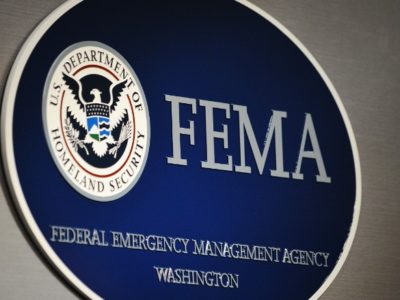Wild horses and the goals of nature protection
A petition to list wild horses as endangered or threatened highlights questions about what our conservation laws should protect

Friends of Animals and The Cloud Foundation have filed a petition seeking listing of the wild horse in the American west as an endangered or threatened species. Given that, according to the petition itself, there are currently some 34,000 wild horses on public lands in the west (with other estimates closer to 50,000), listing is quite unlikely. The petition seems largely to be a vehicle for wild horse advocates to vent their longstanding frustration with the Bureau of Land Management’s approach to managing free-roaming horses under the Wild Horses and Burros Act. Still, it provides food for thought on important questions about what we want the Endangered Species Act (and other conservation laws) to protect. It’s worth thinking about whether, assuming the numbers of wild horses were critically low, they are the kind of entity that should qualify for protection.
One way to approach that question is to ask whether wild horses are “native” to the U.S. west. Indeed, that’s been a source of ongoing conflict between horse advocates and the BLM and livestock grazing interests.
But it’s not directly determinative under the ESA. Nowhere does the word “native” appear in the statute. In one sense that’s a good thing, because deciding what’s “native” is a philosophical morass. In the case of wild horses, their advocates point out that equids (members of the horse family) first appeared in North America, and lived there for until about the end of the last ice age, roughly 10,000 years ago. Before disappearing from the New World, horses had managed to cross into Eurasia, where they survived and were domesticated. Domesticated horses returned to the New World with early European explorers. According to Ecology.Info, most domesticated horses are “fully capable of living and surviving without any aid from people.” So it’s no surprise that horses escaped, early and often, from their human masters to establish new free-ranging populations. Are the horses that now roam North America “native”? It depends on whether you think their early evolution here is a more important marker than their interlude in Eurasia under human control.
If “nativeness” isn’t the key marker for what groups merit protection, what else might be? The ESA is of surprisingly little direct help. Through the definition of endangered species, the ESA essentially declares that any species (or subspecies or vertebrate distinct population segment) can qualify for protection “other than a species of the Class Insecta determined by the Secretary to constitute a pest whose protection under the provisions of this Act would present an overwhelming and overriding risk to man.” Quite possibly the drafters assumed that only native species would be disappearing, or they simply didn’t think about the issue since invasive species weren’t yet on the world’s radar screen.
Another possible marker is “naturalness,” to the world rather than to a specific location. It makes perfect sense not to limit nature protection laws to creatures that are not domesticated if we interpret “nature” to include only the world outside human control. Domesticated creatures are manmade. It seems entirely sensible to protect only creatures we didn’t create, whether as a matter of stewardship, responsibility to a higher power, or the opportunity value of something we can’t bring back if we lose it. But a focus on naturalness doesn’t solve the wild horse dilemma any better than nativeness. It takes us back to the same line-drawing question. Unlike domesticated cats or cows, horses (again quoting Ecology.Info) “acquired all of their horse-like characters long before they ever met humans.” At least according to this source, we didn’t create horses, we simply turned them to our purposes. But how natural must a creature be to merit protection, and is there a time limit on an acceptable sojourn under domestication?
Maybe we ought to protect and restore only (or especially) those creatures who owe their precarious status to our actions. This too makes sense in a “you broke it, you fix it” kind of way. If we are responsible for a group’s problems, we should take responsibility for solutions. But again this doesn’t give us a clear answer to the wild horse question. There’s a fierce debate about whether horses, and many other large mammals that formerly roamed North America, disappeared as a result of human hunting pressure or other causes. Even if people did hunt out horses, that was some 10,000 years ago. Few of us feel much kinship with people from that distant past. Is there a point at which our connection with them is so tenuous that we don’t bear responsibility for their actions? Finally, wild horses can cause problems for other creatures we feel responsible to save. At Sheldon National Wildlife Refuge in Nevada, for example, managers are trying to keep the wild horse and burro population down to limit damage to vegetation and competition with pronghorn antelope.
We might choose to save those creatures we find useful, in direct or indirect ways. I tend to think that direct utility (can we eat it or make things from it, or does it improve our health) is not a great target for nature protection. We don’t need special laws to protect many things that are obviously economically useful, although we may need laws if the utility of nature is a public good. In any case, wild horses are not directly useful. People do eat horse meat in some parts of the world, but most Americans view that idea with distate and the advocates of wild horses in particular are strongly opposed to their use as food. Indeed, like many aspects of nature, wild horses may be more a minus than a plus on the direct utility scale. One of the long-standing tensions in wild horse management is that livestock ranchers believe that wild horses compete with their cows for forage.
Surely each of these things — nativeness, naturalness, responsibility, usefulness — is in the back of our minds when we think about conservation goals. But two other goals seem to be more important motivators for wild horse advocates: symbolism and wildness.
The Wild Horses and Burros Act has an explicitly symbolic foundation: it begins with a congressional finding that “wild free-roaming horses and burros are living symbols of the historic and pioneer spirit of the West.” They are symbolic of our human history, whether or not they are native, natural, or useful. There’s nothing wrong with protecting history. We do that not only with museums, but with landscapes such as Gettysburg National Military Park and Manzanar National Historic Site. But of course there’s always room for debate about what qualifies as a high-priority historic resource and how much history we need.
Even more important than history for wild horse advocates, I think, is that they see wild horses as an important symbol of wildness. Wild horses are big, beautiful, fast, and I’m guessing more intimidating up close than cows (I confess that I’ve never encountered a wild horse at close range). They are a visible reminder that parts of the west remain outside direct and intensive human control. I view wildness as an important conservation goal for any number of reasons — it helps teach us humility, it can help us avoid costly management mistakes, and it offers space for evolutionary processes we purport to value. But like the other goals, it is far from unambiguous. While some see free-roaming horses as the essence of wildness, to others they may be a visible reminder that our landscapes are heavily influenced by human actions past and present. And the landscapes large horse populations produce, featuring close-cropped vegetation and barren streamsides (check out the pictures from Sheldon NWR), may look no more wild than those produced by heavy livestock grazing.
So what lessons do I draw from this extended reverie on the wild horse? First, that there are no easy answers. It’s no surprise that wild horse management is controversial. It highlights the ambiguities in some of our conservation goals and the tension between others. Second, it’s past time for a more explicit conversation about conservation goals. Given climate change and our evolving understanding of natural history, we’re likely to find in future decades that some goals are no longer achievable while others are in conflict to a greater extent than we realized. We don’t need a single conservation goal. We want many things from nature. But we do need to understand where conflicts are likely to occur so that we can address the question of priorities. And we need to think about where we want to put our conservation resources, something we can’t do sensibly unless we have a clearer sense of what we’re trying to achieve.
Reader Comments
One Reply to “Wild horses and the goals of nature protection”
Comments are closed.






I’m only gonna say this one more time…..get the damn welfare cattle/sheep & fracking off OUR public lands. The taxpayers are speaking!!! ESA or whatever, taxpayers will not allow OUR wild horses & burros to be made extinct which is exactly what the BLM and welfare ranchers want. In the meantime, BOYCOTT BEEF until our wild horses are safe and the Safeguard American Food Exports Act is law.